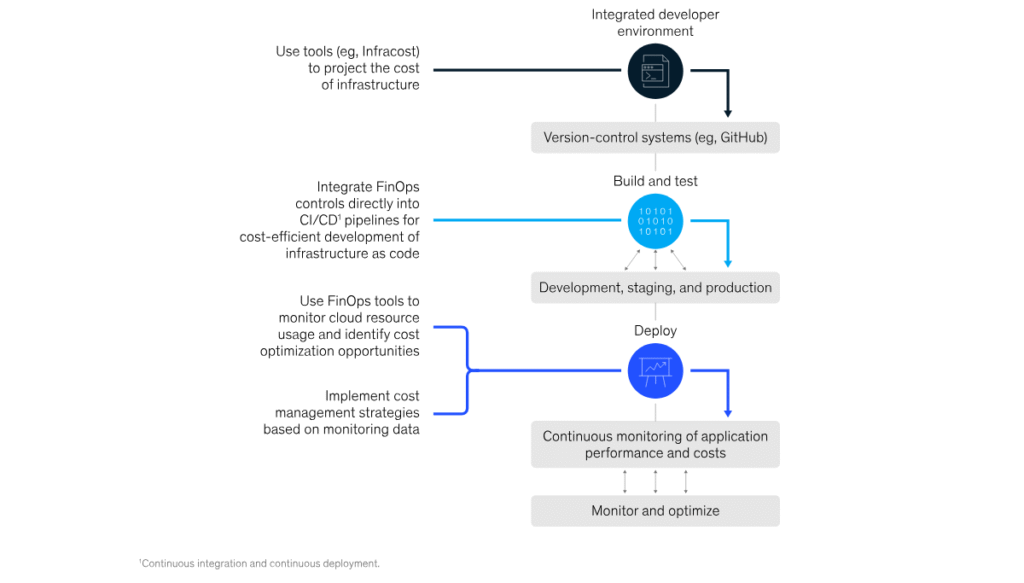FinOps as Code isn’t just a trendy phrase. It’s a response to a very real problem: cloud cost management is still too manual, too reactive, and too disconnected from how engineering teams actually work.
According to a recent McKinsey study, companies are leaving 10–20% of cloud savings on the table — not because they lack tools, but because they lack integration. The report estimates $120 billion in global value could be unlocked by embedding FinOps directly into engineering workflows.
That’s where FinOps as Code comes in. It’s not about adding another dashboard. It’s about turning cost policies into code — so they live inside the same pipelines, tools, and environments developers already use.
What FinOps as Code Actually Looks Like
FinOps as Code isn’t just a philosophy — it’s a set of practices that embed cost awareness directly into the engineering workflow. Instead of asking developers to check a dashboard after deployment, it brings cost logic into the tools they already use.
Here’s what it looks like in action:
Tagging enforcement in CI/CD pipelines
Resources without tags don’t get deployed. Simple as that. This ensures cost attribution from day one.Slack/Teams alerts for cost anomalies
Instead of waiting for finance to flag a spike, developers get real-time alerts in the channels they already live in.Automated shutdown of idle resources
If a dev environment hasn’t been touched in 72 hours, it’s paused or decommissioned — automatically.Cost-per-feature metrics in product planning
Teams can see how much each feature costs to run, helping them prioritize and optimize.
These aren’t just nice-to-haves. They’re the building blocks of a scalable FinOps culture — one that doesn’t rely on heroics or postmortems.
And yes, CloudMonitor.ai supports all of this. From tagging enforcement to Slack-based anomaly alerts, it’s built to make FinOps as Code not just possible, but painless.

FinOps as Code Isn’t Just a Trend — It’s a Response to Cloud Reality
McKinsey’s research shows that most organizations still struggle to capture cloud value, even with dedicated FinOps teams. The problem isn’t just tooling — it’s that engineers often don’t have the access, incentives, or bandwidth to act on cost insights.
FinOps as Code changes that. By embedding cost logic directly into engineering workflows, it removes friction and makes cost control part of how teams build, deploy, and scale.
This approach isn’t theoretical. McKinsey reviewed over $3 billion in cloud spend and found that 10–20% of savings remain untapped in most organizations. They estimate $120 billion in global value could be unlocked by adopting FinOps as Code — especially as cloud infrastructure spending hits $440 billion in 2025.
The takeaway? FinOps as Code isn’t about adding more dashboards. It’s about building smarter systems that act on cost signals automatically, and giving engineers the tools to do the right thing without slowing down.
If your cloud cost strategy still depends on monthly reviews and manual tagging, it might be time to rethink the foundation.
🔗Read the full McKinsey study
🔗 Explore CloudMonitor.ai’s FinOps automation features
- Why FinOps as Code Is the Future of Cloud Cost Management - October 1, 2025
- How to Build a FinOps Culture Without Slowing Developers Down - September 16, 2025
- What Your Cloud Bill Says About Your Engineering Culture - September 16, 2025
